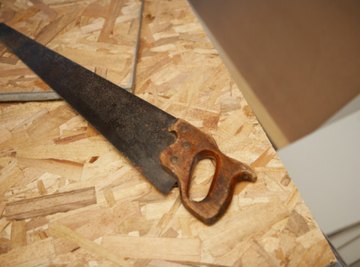
Plywood is thin, compressed layers of wood (or veneers) bonded together with adhesive and used for construction. Plywood is utilized in a broad range of applications, from floors and furniture to containers. As a widely used manufactured material of natural origin, plywood has raised several global environmental concerns.
Types
Plywood is divided into three principal categories: softwood, hardwood and tropical. Softwood plywood is generally made from coniferous trees such as fir, spruce and pine. Deciduous trees including oak, maple and poplar are used to manufacture hardwood plywood. Tropical plywood — also known as lauan and meranti — is composed of wood from various Asian tree species.
Deforestation
Deforestation refers to the removal of trees and other forest-related elements and ecosystems. This can range anywhere from a small project to a grand scale removal, and usually done for agricultural or industrial purposes.
Balancing the commercial need for wood with environmental concerns has been a challenge for nations around the world. Despite government efforts to control deforestation, damaging and illegal logging practices are still an issue. This is especially a problem in areas that are heavily targeted for their high quality of timber, such as Southeastern Asia for tropical plywood.
Emissions
Emissions that are produced from the manufacture of plywood can negatively impact air quality. Three of the main types of emissions include those created from particle matter, veneer dryers and adhesives.
Particle (or particulate) matter consists of wood dust and bits that are released into the air during log cutting, bark removal, plywood sanding and plywood cutting.
Once logs are debarked and cut into smaller pieces called peeler blocks, the blocks are heated and soaked in a warm water solution. The wet peeler blocks are then sliced into veneers, or thin sheets of wood. As the damp veneers are being dried, air pollutants are emitted from the wood in the form of organic compounds such as methanol. Also, depending on the drying method and type of wood, other pollutants are released through fuel combustion from the drying equipment.
After drying, the veneers are glued and hot pressed to form plywood. Additional air pollutants such as formaldehyde are released from the glue and pressing process.
Forest and Emissions Management
In addition to government regulation, private organizations such as the Forest Stewardship Council certify wood products from groups that adhere to specified legal and environmentally-friendly manufacturing processes.
Numerous methods are employed by manufacturers to help control emissions, including the use of absorption and oxidation systems, wet electrostatic precipitators and electrified filter beds.
References
About the Author
Andrea Sigust began writing professionally in 1994, authoring user-friendly manuals, reference guides and information sheets while working at a hospital. After years of working in industries ranging from health care to telecommunications, Sigust became a writer. She specializes in the sciences and holds a Bachelor of Science in journalism from the University of Maryland.
Photo Credits
Jupiterimages/Photos.com/Getty Images
